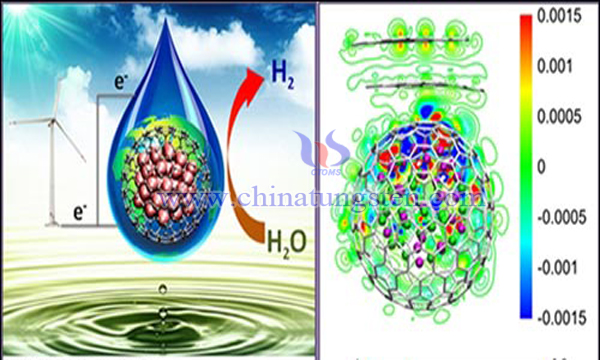Graphene-bismuth Tungstate Lamellar Nano Photocatalytic Materials
- Details
- Category: Tungsten Information
- Published on Sunday, 28 July 2019 22:13
Bismuth tungstate (Bi2WO6) is a typical n-type semiconductor formed from octahedral WO6 and Bi2O2 layers. Bi2WO6 has excellent chemical properties, unique ferroelectric properties, catalytic properties and magnetic susceptibility of non-linear dielectrics. Bi2WO6 is a good visible-light photocatalyst material.

Due to the low photoquantum yield of bismuth tungstate, the photogenerated electrons and holes are easily recombined, which shows a low photocatalytic efficiency. In addition, tungsten and bismuth are rare metals with high prices, which limits the wide application of bismuth tungstate in industry.
In order to improve the present situation, some scholars used graphene as carrier, modified graphene with bismuth tungstate and silicon bismuth tungstate lamellar structure, thus forming a new nano-derivative material with strong adsorption and high photocatalytic activity under sunlight. The process is as follows:
(1)Graphene oxide solution with 3 mL concentration of 0.6 g/L was added to 70 mL deionized water for ultrasonic dispersion for 30 minutes, and stable graphene dispersion was obtained.
(2)The solution was dispersed by ultrasonic stirring at 0-40 ℃ for 15-30 min, and the uniform solution was obtained.
(3)Adding 0.3 g sodium tungstate, 2 g polyacrylic acid (degree of polymerization 800-1000) and 0.8 g hexadecyltrimethylammonium bromide to the above solution, stirring and dissolving, then stirring for 15 minutes at 35 ~℃, freezing at 0 ~℃ for 14 hours, then adding 0.45 g bismuth nitrate under ultrasonic stirring. The colloidal solution was obtained by ultrasonic stirring for 30 minutes.
(4)The colloidal solution described in step (3) is aged at room temperature (25 ℃) for 2 hours, and then transferred into a 100 mL reactor for 10 hours at 120 ℃.
(5)The reactants described in step (4) are cooled naturally to room temperature, filtered and washed five times with distilled water and anhydrous ethanol; the detergents are baked at 65 ~℃ for 12 hours, and then grinded to obtain graphene-bismuth tungstate nano-photocatalyst.
When the concentration of 0.25g sample is increased to 1.0 *10-5 mol/L, the xenon lamp (500 W) with loop cooling water is turned on and the whole Rhodamine B can be degraded in 40 minutes. These results indicate that graphene-bismuth tungstate nano-sheet photocatalyst has good adsorption and photocatalytic properties for Rhodamine B organic compounds.
- Tungsten Oxide Manufacturer & Supplier, Chinatungsten Online: www.tungsten-oxide.com
- Tungsten News & Prices of China Tungsten Industry Association: www.ctia.com.cn
- Molybdenum News & Price: news.molybdenum.com.cn
- Tel.: 86 592 5129696; Fax: 86 592 5129797; Email: sales@chinatungsten.com



 sales@chinatungsten.com
sales@chinatungsten.com